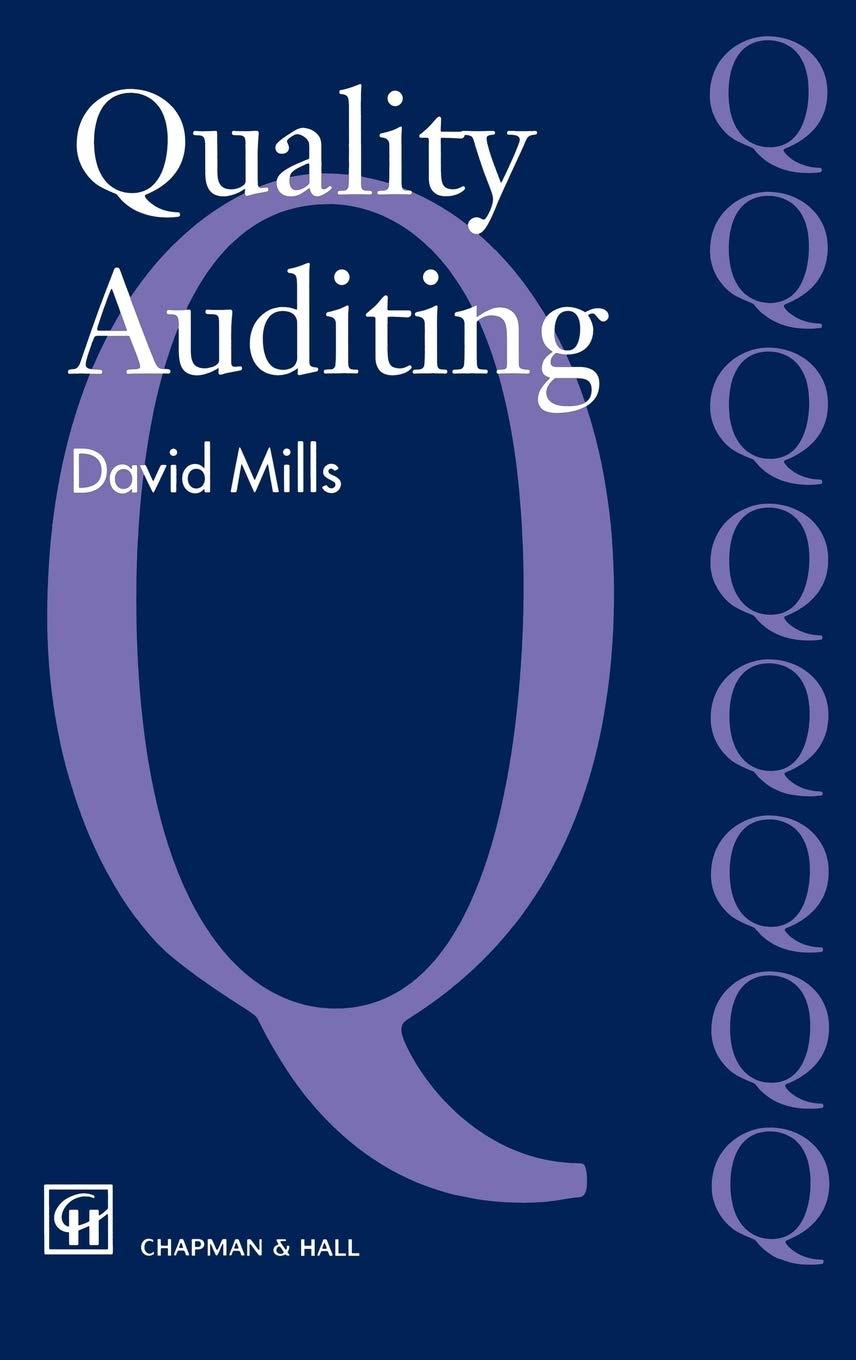Question
3) MedTech, Inc., manufactures and sells diagnostic equipment used in the medical profession. Its job costing system was designed using an activity-based costing approach. Direct
3) MedTech, Inc., manufactures and sells diagnostic equipment used in the medical profession. Its job costing system was designed using an activity-based costing approach. Direct materials and direct labor costs are accumulated separately, along with information concerning four manufacturing overhead cost drivers (activities). Assume that the direct labor rate is $25 per hour and that there were no beginning inventories. The following information was available for 2016, based on an expected production level of 371,429 units for the year:
| Activity Cost Driver | Budgeted Costs for 2016 | Cost Driver Used as Allocation Base | Cost Allocation Rate | ||||
| Materials handling | $ | 3,200,000 | Number of parts used | $ | 4.25 | per part | |
| Milling and grinding | 9,000,000 | Number of machine hours | 12.50 | per hour | |||
| Assembly and inspection | 5,200,000 | Direct labor hours worked | 5.50 | per hour | |||
| Testing | 1,300,000 | Number of units tested | 3.50 | per unit | |||
The following production, costs, and activities occurred during the month of August:
| Units Produced/Tested | Direct Materials Costs | Number of Parts Used | Machine Hours | Direct Labor Hours |
| 54,000 | $3,700,000 | 270,000 | 97,000 | 150,000 |
Required:
a. Calculate the total manufacturing costs and the cost per unit produced and tested during the month of August for MedTech, Inc. (Round "Cost per unit" to 2 decimal places.)
b. Which of the following are the advantages of the ABC approach relative to using a single predetermined overhead application rate based on direct labor hours. (Note: You do not have to calculate the overhead that would be applied for the month of August using this alternative method.) (Select all that apply.)
ABC does not help in decision-making.
ABC systems produce more accurate financial information.
ABC approach is likely to provide better information to manufacturing managers.
ABC helps in decision-making.
ABC systems produce more accurate product costing information.
4)
Muscle Beach, Inc., makes three models of high-performance weight-training benches. Current operating data are summarized here:
| MegaMuscle | PowerGym | ProForce | |||||||
| Selling price per unit | $ | 143 | $ | 191 | $ | 290 | |||
| Contribution margin per unit | 39 | 76 | 60 | ||||||
| Monthly sales volumeunits | 2,930 | 1,950 | 1,090 | ||||||
| Fixed expenses per month | Total of $326,100 | ||||||||
a. Calculate the contribution margin ratio of each product. (Round your answers to 1 decimal place.)
b. Calculate the firm's overall contribution margin ratio. (Round your answer to 1 decimal place.)
c. Calculate the firm's monthly break-even point in sales dollars. (Round your intermediate calculations to 1 decimal place.)
e-2. Would you recommend the elimination of the ProForce model
| Yes | |
| No |
f1. Assume the same facts as in requirement e-1. Assume also that the sales volume for the PowerGym model will increase by 500 units per month if the ProForce model is eliminated. What would be the effect on operating income.
f-2. Would you recommend eliminating the ProForce model?
| Yes | |
| No |
5)
Presented here is the income statement for Big Shot, Inc., for the month of May:
| Sales | $ | 61,500 | |
| Cost of goods sold | 52,700 | ||
| Gross profit | $ | 8,800 | |
| Operating expenses | 14,300 | ||
| Operating loss | $ | (5,500 | ) |
Based on an analysis of cost behavior patterns, it has been determined that the company's contribution margin ratio is 20%.
Required:
a. Rearrange the preceding income statement to the contribution margin format.
b. If sales increase by 15%, what will be the firm's operating income (or loss)? (Do not round intermediate calculations.)
c. Calculate the amount of revenue required for Big Shot, Inc., to break-even.
6 a) Monterey Co. makes and sells a single product. The current selling price is $15 per unit. Variable expenses are $9 per unit, and fixed expenses total $34,300 per month. (Unless otherwise stated, consider each requirement separately.)
Required:
a. Calculate the break-even point expressed in terms of total sales dollars and sales volume. (Do not round intermediate calculations.)
|
6b. Calculate the margin of safety and the margin of safety ratio. Assume current sales are $100,750. (Do not round intermediate calculations. Round your percentage answer to 2 decimal places.)
|
| c. Calculate the monthly operating income (or loss) at a sales volume of 5,050 units per month. (Do not round intermediate calculations.
|
|
Step by Step Solution
There are 3 Steps involved in it
Step: 1

Get Instant Access to Expert-Tailored Solutions
See step-by-step solutions with expert insights and AI powered tools for academic success
Step: 2

Step: 3

Ace Your Homework with AI
Get the answers you need in no time with our AI-driven, step-by-step assistance
Get Started


